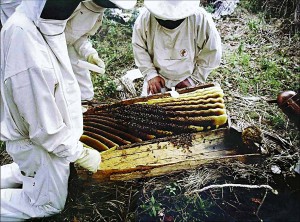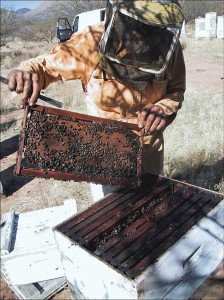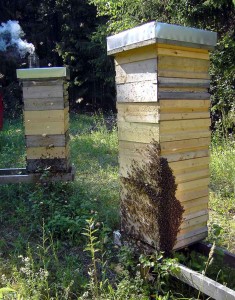Kenya
I started long before the mite arrived to focus on increasing the varroa resistance in my stock. 1989 I went to the mountains of Kenya to get genetic material that were more related to the resistant bees in South America than we had in Europe. Today I realize I probably didn’t need to do that. Maybe it made it easier. But it wasn’t easy to go to Africa either and make a new stock from there.
Anyway here I am with what I call Elgon bees. I don’t want any other bees today. I though try new strains in combination now and then.
Sonoran desert
In the ’magic’ year of 2000 I reached the age of 50. I fled the celebrations and went to the Sonoran desert in Arizona together with my family. I had heard of a remarkable woman and her husband, Dee and Ed Lusby, keeping bees there on small cell size, 4.9 mm, instead of the enlarged 5.4 that had come to be kind of standard. Some dismiss the bees of Lusby saying they are resistant because they are Africanized, So what, if that’s the case? African bees are not Apis cerana, the original host of the varroa mite. They are Apis mellifera, just like the bees we are used to. We have something to learn here, don’t we?
I regressed my bees down to 4.9. I took some years. Probably not entirely everywhere when the mite arrived. Whatever effect small cellsize has, I don’t want to go big again. I got quicker bees, quicker spring build up and very strong colonies. Honey crops are not smaller, maybe bigger. The bees don’t swarm easier when handled with lots of room.
Elgon bee
The name Elgon is inspired by the mountain in western Kenya from where we got breeding material (eggs and semen). I kept track of the theoretical content of the heritage for many years. Today it may hold about 25% Monticola (from Mt Elgon), 5% Sahariensis and the rest ’traditional’ Buckfast. Now when Varroa has reached me the heritage is not of any major concern anymore.


